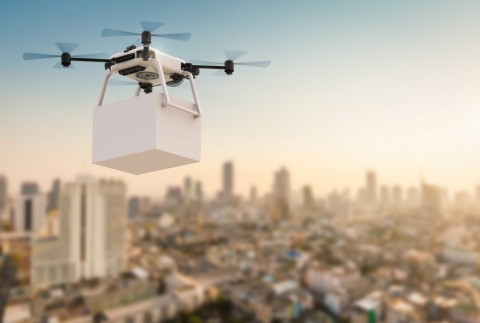The concept of a drone was not something we gave much thought to just a few years ago—except for the applications of the military-related operations, much less drones in supply chains as product delivery mechanisms. But now, the day-to-day use of drones is a reality as they are being used for many purposes, from consumer recreational use to media, and from industrial to institutional applications.
For example, streaming companies are using unmanned aerial vehicles (UAVs), aka drones, to capture live events for sports, political rallies and concerts. Some governments use them to keep an eye on the wildlife in geographically remote areas, while some others utilize different variations of those devices for border patrol and other domains of law enforcement.
Meet the dazzling drones of the supply chain near future
Technological advancements in the drone industry is opening new doors not just for military or government entities, but also for business-to-consumer (B2C) industries to provide more efficient services to customers. Raffaello D'Andrea, a Canadian entrepreneur, engineer and professor at ETH Zurich delivered a very cool presentation at TED Talks back in 2016 to talk about different ideas and future applications of drones. Researchers and entrepreneurs like D’Andrea have been investing resources to discover more alternatives for the use of UAVs to gain competitive advantage in the rapidly growing commercial drone industry.
Drone delivery in supply chains and their impact
Drones in supply chain will presumably have high impact on industries that rely on package delivery. Today’s well-known, pioneering companies are already investing in such technology to make sure that they keep their market presence high in consumer services. For example, Google’s subsidiary, Wing, was the first company that was successful in acquiring an “air carrier certification” by the Federal Aviation Administration after passing rigorous safety requirements and thousands of hours of test flights performed in different conditions.
Other companies like Amazon are also very close to making drones a part of their day-to-day services for their consumers. Earlier this summer, Amazon shared some exciting news about its drone delivery program and the new design aspects of the future delivery options. With drones that can fly up to 15 miles and deliver packages under five pounds to customers in less than 30 minutes, the company is hoping to increase the efficiency of the package delivery process for its Amazon Prime Air customers.
Other companies that have the primary business value in express shipping services are also heavily investing in the UAV technology. The delivery giant, UPS, is hoping to get the required government approval for its own drone delivery concept as its subsidiary, UPS Flight Forward was able to demonstrate successful results with its pilot autonomous delivery program for medical supplies in North Carolina.
Meanwhile another industry giant, DHL Express, has partnered with the intelligent autonomous aerial vehicle company EHang to tackle the deliver challenges in China, mainly focusing on the urban areas. Despite overcoming the technological and bureaucratic challenges, the use of drones in package delivery still has its own unique obstacles. Brian Foley wrote about those challenges from the practical point of view, stating obvious concerns like noise pollution, privacy, weather challenges and potential catastrophic accidents that can occur due to technical problems.
Others mention concerns such as the potential increase in theft and cost of overall operations. While many objections are yet to be addressed, it’s inevitable that drones will play a vital role in everyday life in the near future. As a result, research on how drones will affect the domain of Supply Chain Operations and Planning is also underway to spot the potential impact on companies’ future strategic decisions.
Benefits of drone delivery
It’s safe to state that the usage of drones for package delivery will dramatically reduce the cost of delivery as the need for traditional mediums such as planes, ships, trains and trucks, will be minimized for deliveries to consumers. With successful logistics, today’s efficient one-day delivery commitments could easily be reduced to just 30 minutes.
Another domain of cost efficiency arises in the usage of spare parts of the drones, as it is argued that the replacement of damaged parts of day-to-day use drones in supply chains will cost less than today’s delivery mediums. As drones can be equipped with tools like cameras, GPS devices, the delivery of packages can also be more accurate with the elimination of human element when locating the consumer’s address. With the help of mobile apps, drones could instantly spot the consumer to deliver the package, regardless of the individual’s location or the time of the day. Drones can also adjust to the shortest routes, operating independently to avoid traffic obstacles in urban areas.
Different applications of drones will increase the efficiency of asset management for many companies. The relatively-manual process of monitoring inventory levels currently costs a lot due to labor intensity, and the results may not be fully accurate due to the nature of making mistakes. Using drone-like devices to perform these tasks will be a game changer for those daily operations as barcode and QR-code scanners can be integrated to perform the required tasks and activities. While it’s interesting to monitor the new technological advancements in drone industry, it’s absolutely impressive to witness how innovations like these can impact multinational organizations, forcing them to adapt and create a competitive advantage to deliver their goods and services.
The future will bring more clarity to how we use drones in supply chains to overcome the obstacles, but one thing is certain—drone technology provides new opportunities for companies to optimize and automate their supply chain operations.





Leave a Reply